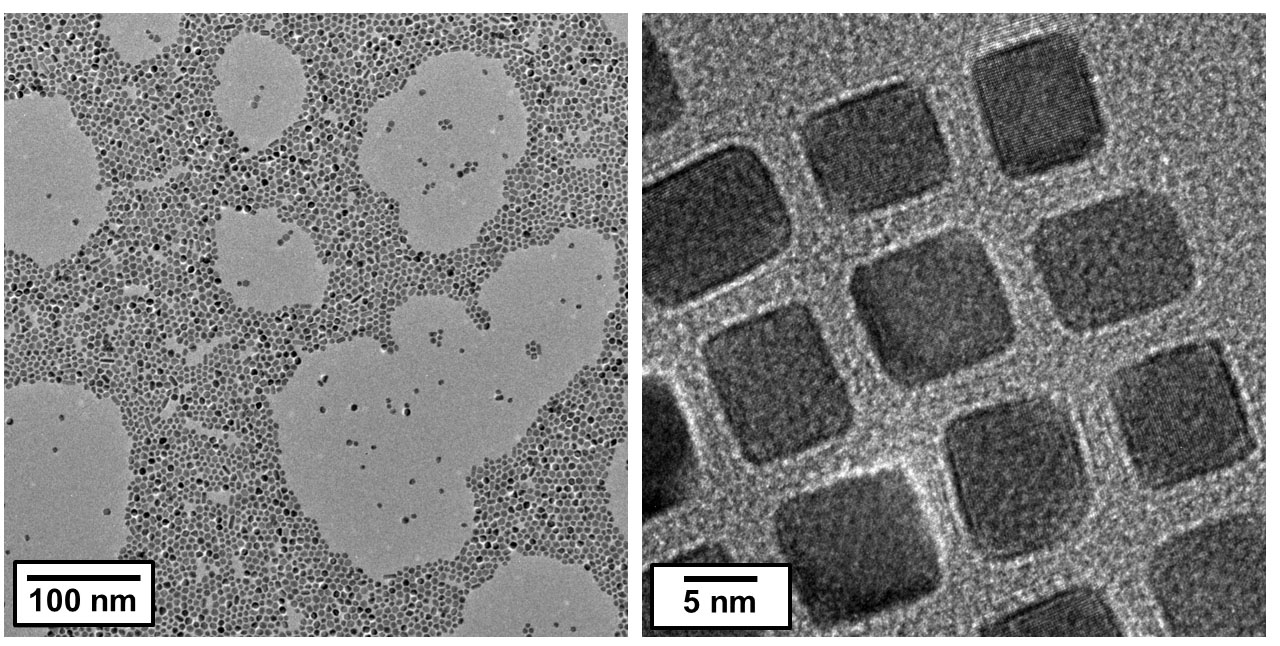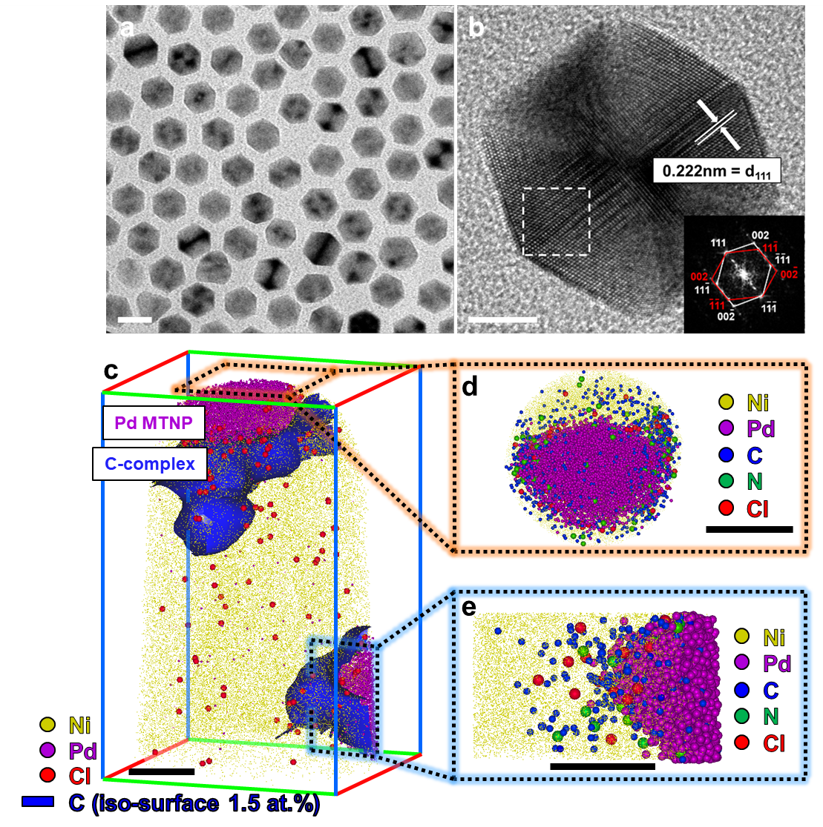Nanomaterials
Nanomaterials
Metallic nanoparticles show unique characteristics which make them suitable for a wide range of applications, including catalysis, biotechnology, adsorption, magnetic separation and environmental remediation. Their chemical and physical properties can be controlled not only by varying material composition but also by tuning size and shape. A key to understanding nanoparticle properties is mapping the elemental distribution within the nanoparticles in 3D with atomic resolution, which is a highly challenging task. NMAC lab will conduct correlative Atom Probe Tomography (APT) and Transmission Electron Microscopy (TEM) on various nanoparticle systems. The relationship between surface structure, composition of nanoparticles and nanoparticle properties will be carefully elucidated.

In our lab, we have developed a new preparation method for APT specimens from nanoparticles, The method is based on embedding the nanoparticles in a metallic matrix using electrophoresis and eletrodeposition. the main advantage of the combined usage of electrophoresis and eletrodepostion that nanoparticles ar well encapsulated while forming no void and preserving nanoparticle size and morphology. The method may be simply applied to other nanoparticle systems. We expect the developed method to contribute to an improved general understanding of the strucure-compostion-property relationships of nanoparticles.
Although capping ligands are indispensable for synthesizing colloidal NPs, little is known about their adsorption behavior on different crystallographic facets, especially at the atomic scale. There are still some important unanswered questions such as: What are the amounts of ligand molecules adsorbed on the NP surfaces? What is the interplay between different ligands added together during a growth process? How do ligands stabilize the NP surfaces thermodynamically and kinetically? How do ligands influence the inherent vulnerability of the NP surfaces against chemical attacks?
Atom probe tomography (APT) is an advanced technique that can overcome such limations. The unique combination of near-atomic resolution and ppm-level detection sensitivity, irrespective of the elemental mass, makes APT an ideal tool for the characterization of nanomaterials. Therefore, we adopted this state-of-the-art technique to investigate the 3D distribution of cetrimonium ligands on multiple-twinned NPs (MTNPs) of Pd.
Through a correlative analysis of APT, TEM, and Density Functional Theory (DFT) calculation, we revealed the source of superior oxidation resistance of MTNPs and hidden interaction between halide ions and cetrimonium ligands on nanoparticle surface.

(K. Jang, S. Kim, H. Jun, C. Jung, J. Yu, S. Lee, P. Choi, Nature Communications (2021) 1)
